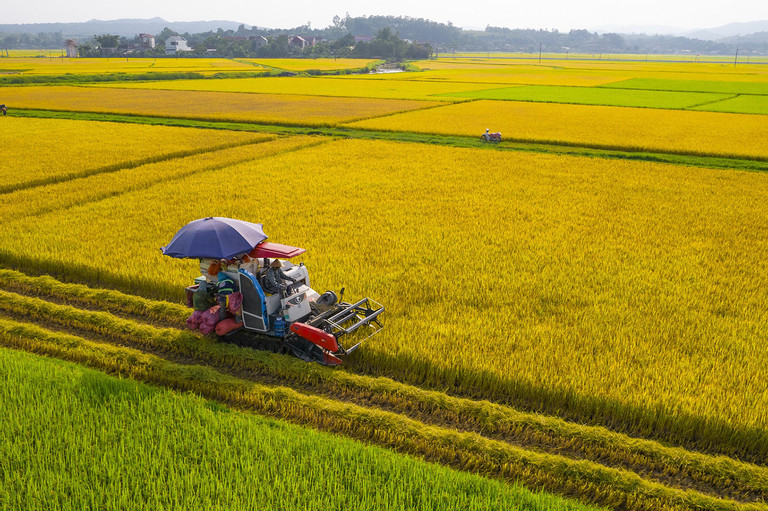Tags
Bottlenecks block rice value chain
Experts have pointed out 10 problems that are hindering the development of the rice value chain, though Vietnam has great advantages for production.

Rice farming is the livelihood of tens of millions of farmers. A report says Vietnam puts out 43 million tons of rice in 2023. About 8 million tons of rice is exported this year, worth $4.5 billion.
The rice price reached its historic peak in 2023. Unhusked paddy was sold at VND9,000 per kilogram at fields, while 5 percent broken rice export price sold at $663 per ton.
However, at the workshop on developing Vietnam’s rice value chain held on December 13, Le Thang Tung, deputy head of the Department of Crop Production under the Ministry of Agriculture and Rural Development (MARD), said there have been many problems for many years, including small-scale production and high production costs. Though export volume is high, the value remains modest and farmers earn little money.
Value chain
Meanwhile, rice production in Mekong Delta, the largest rice granary of Vietnam, is facing difficulties in water supply as floods don’t come as usual and salinity intrusion has increased.
Nguyen Phu Son from Can Tho University pointed out 10 bottlenecks that he believes hinder the sustainable development of the rice value chain, and many of them have existed for many years.
The members of the rice value chain still are not fully aware of the nature of cooperation, therefore they just strive for short-term profits rather than long-term benefits. Their cooperation contracts are just seasonal and contemporary.
The way of thinking of the members of the chain is unreasonable which doesn’t come towards market rules and sustainability. The parties of the value chain don’t share risks and benefits. The problem is seen most clearly in negotiations and rice collection. Farmers often break contracts signed with export companies if they can sell rice to merchants at higher prices.
Son went out to say that Vietnam still cannot build a big database about rice production, which is a big problem affecting the market forecasting capability and management which can help optimize the supply and demand gap. Lack of market forecasting reduces the operational efficiency of all links in the chain.
According to Cao Thang Binh, a senior expert at the World Bank, the fact that export countries tend to reduce the output and halt export has created favorable conditions for Vietnam to boost its export and dominate the world market. However, Vietnam’s rice productivity has become critical and it can hardly increase further. Vietnamese farmers have to use a lot of input materials, especially fertilizer, in order to gain high yields.
Cooperation
Nguyen Duy Thuan, general director of Loc Troi Group, said there are some major criteria Vietnam has to satisfy.
First, production must be sustainable in all the three pillars – business, environment and society. The current high rice prices allow farmers to have stable income, which proves to be the highest among business fields.
They can gain revenue of $3,000-3,500 from every hectare of farming for every $1,000 worth of investment.
Cooperation in production helps reduce the production cost and stabilize supply capability. This is a very important factor, because rice production has a large scale and a high demand of millions of tons. Therefore, cooperation in production is a must. Barriers need to be removed to create production cooperation.
Second, it is necessary to remove the barrier in credit access. There are many preferences offered to farmers, cooperatives and rice production companies, but they are not really suitable to the characteristics of the rice production. This is just like a person who has clothes, but they are unwearable and he still suffers from cold.
Third, it is necessary to remove legal barriers.
Fourth, mechanizing the production process. Comprehensive mechanization allows to reduce the loss during the production and increase economic efficiency.
According to Bui Ba Bong, former Deputy Minister of Agriculture and Rural Development, with 10 million rice farming households, 300 enterprises and 20,000 rice collectors, it is very difficult to regulate the rice value chain.
A production chain has many different levels, and the shortest and most effective is the one where farmers can carry rice directly from rice fields to processing plants. In Vietnam, some companies are following the model, but it is impossible to apply the model immediately for all the 4.3 million hectares of rice.
Tam An
https://vietnamnet.vn/en/bottlenecks-block-rice-value-chain-2228471.htmlPublished Date: January 2, 2024





